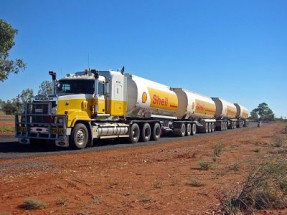
Australia’s peak body for councils and municipalities, the Australian Local Government Association (ALGA), has cautiously welcomed the 2016-17 Budget, expressing relief that the Roads to Recovery program will get a little extra cash alongside an “indication” of a return to inflation-proofing annual grants from Canberra to councils.
Funding for the popular scheme, which provides specific purpose funding for councils to fix key roads, has been boosted by $50 million a year with the forward estimates confirming it will continue beyond 2018-19.
While abolishing the scheme would have equated to political suicide in the regions, the boost reflects a restoration of a prominent role for councils at the bigger national policy table after the Abbott government intentionally expunged the term ‘local government’ from the very portfolio that looks after it.
ALGA President Mayor Troy Pickard said councils had called for additional funding for the Roads to Recovery program “and the extra funds indicated in the budget will be welcomed in helping to address the challenge of maintaining more than 640,000 km of local roads.”
However the peak body has also cautioned that the money will only go part of the way to fixing Australia’s bitumen repair backlog and called for roads to be a national investment priority.
“More needs to be done to ensure the local road network has the capacity required to address access, productivity and road safety issues, especially in regional areas,” Mayor Pickard said.
“Additional investment in local roads must be part of the solution to increasing transport productivity on the nation’s transport network.”
There was also palpable relief that indexation appears to be returning to the popular Financial Assistance Grants (FAGs) program that suffered a sudden billion dollar hit under the Abbott government that caught many councils badly short on their own budgeting.
According to ALGA, the numbers contained in the budget out years “signalled an expectation that annual indexation of Financial Assistance Grants (FAGs), which will provide $2.3 billion in untied funding to local government in 2016-17, will return from 2017-18.”
However the Turnbull government is keeping its options open on the re-indexation front, opting to communicate any move to restore inflation proofing through interpretation rather than specifically calling out and thus committing to such a move.
One financially influential factor that won’t to be lost on councils is that while the $1 billion dollar hit via pausing indexation hurt, inflation has remained stubbornly low thus dulling the part of relief that indexation might have otherwise had.
“The three-year pause on FAGs indexation implemented in the 2014-15 budget was unexpected and had a severe impact on the sector,” Mayor Pickard said.
“We sought a specific commitment from the Government and the Opposition to restore indexation. The indication that indexation is expected to return in 2017-18 is welcome although it does not completely guarantee an end to the freeze, which will reduce ongoing funding for councils around Australia by more $300 million per year.”
At a wider level ALGA has applauded the vigorous reversal by the Turnbull government of Tony Abbott’s strong that Commonwealth needed to stay strictly out of state led public transport projects, especially at a funding level.
Councils have the potential to directly benefit from public transport improvement because of the potential to raise property values on which rates are calculated as well as naturally attracting more residents to council areas well served by trains, light rail and busses.
Mayor Pickard said a commitment to infrastructure is essential and “was one of the strong themes running through ALGA’s budget submission and 2016 election plan” and welcomed top ups for roads black spots and bridges.
“From ALGAs’ perspective the additional $60 million in funding for the Bridges Renewal Program and Black Spot Programme will be very welcome,” Mayor Pickard said.





Increases in property values have NO effect on councils, because councils reduce the rate in the dollar to compensate, unlike land tax. This is why for example in Victoria there is a 2.5% rate increase yet a land tax increase of over 25%.